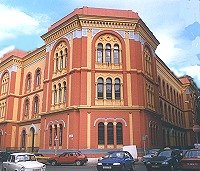WE WELCOME THE SWIFTS ON THEIR RETURN TO NEST IN THE WESTERN WALL IN JERUSALEM
Monday, 12 March 2012
The Common Swift is a unique bird that spends most of its life on the wing.
It feeds on flying insects, which it hunts in the air, it drinks while flying, it sleeps on the wing and it even mates on the wing at the beginning of the breeding season.
The Common Swift spends most of the time living in South Africa in dense colonial groups and at
the beginning of spring starts migrating north to its breeding sites.
During mid-February it arrives in Israel, which is known to be one of its first breeding sites, and
migrates back to Africa at the beginning of June, immediately after its nestlings have fledged.
It is a small bird, weighing only 35 – 45 grams, but is a superior flier, an aerial acrobat. It has a thin,
short body and impressive, long, scythe-like wings with an outstanding aspect ratio.
Ever since humans have started building cities, the Common Swift has found our buildings perfect
for nesting sites including ancient holy sites such as churches, synagogues, mosques and temples,
and has become dependent on us.
The Western Wall in Jerusalem serves as one of the oldest Common Swift nesting sites in the world.
A special study to map the nests was conducted in 2002 by the researcher, Mr. Ulrich Tigges and by
the late Prof. Mendelssohn during which 88 nests were noted. This study map served as a guideline
during the work of strengthening the Western Wall, keeping the nests unblocked.
However, the future of the Common Swift is not secure at all and their future is at risk.
The FRIENDS OF THE SWIFTS Association, the Society for the Protection of Nature in Israel, and Tel Aviv University are working together to promise the future of the Common Swift by all available
means: saving existing nesting sites, designing and building new ones, special educational programs
in schools, assisting Wildlife Rehabilitation Centers, and PR activities to increase public awareness of
this special bird and the problems it faces.
Thank you very much for joining us on this unique and special day, which also symbolizes the arrival of spring.














